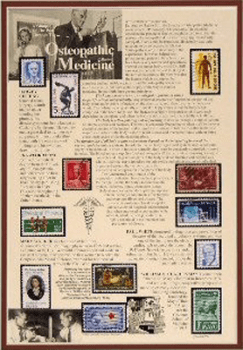WHAT IS A DO?

If you’re like most people, you’ve been going to a physician ever since you were born and perhaps were not aware whether you were seeing a DO (osteopathic physician) or an MD (allopathic physician). You may not even be aware that there are two types of complete physicians in the United States. The fact is that both DOs and MDs are fully qualified physicians licensed to prescribe medication and perform surgery. Is there any difference between these two kinds of physicians? Yes. And no.
Together, DOs and MDs enhance the state of health care available in America. DOs, however, belong to a separate yet equal branch of American medical care. It is the ways that DOs and MDs are different that can bring an extra dimension to your family’s health care.Lorem ipsum dolor sit amet, consectetur adipiscing elit. Ut elit tellus, luctus nec ullamcorper mattis, pulvinar dapibus leo.
SIMILARITIES
- Applicants to both DO and MD medical colleges typically have four-year undergraduate degrees with an emphasis on scientific courses.
- Both DOs and MDs complete four years of basic medical education.
- After medical school, both DOs and MDs obtain graduate medical education through such programs as internships and residencies. This training typically lasts three to six years and prepares DOs and MDs to practice a specialty.
- Both DOs and MDs can choose to practice in any specialty area of medicine-such as pediatrics, family practice, psychiatry, surgery or obstetrics.
- DOs and MDs must pass comparable examinations to obtain state licenses.
- DOs and MDs both practice in fully accredited and licensed health care facilities.


DIFFERENCES
- Osteopathic medical education places a strong emphasis on primary medical care. Osteopathic physicians are trained to be complete physicians first, then as specialists if they choose.
- Osteopathic Diagnosis Osteopathic physicians receive specialized training about the musculoskeletal system. This helps them to better understand the ways an injury or illness can affect different regions of the body allowing a “holistic” approach to medical care.
- Osteopathic Manipulative Treatment (OMT) Osteopathic physicians are also trained to use OMT, a manual medicine technique. Through the use of OMT, the osteopathic physician can assist in restoring musculoskeletal balance which assists in promoting the body’s natural healing ability.
- Osteopathic physicians are taught to emphasize prevention of injury or illness in addition to treating current medical problems.
OSTEOPATHIC FACTS
- Every year over 100 million physician visits are made to a DO
- DOs account for 5.5% of all US physicians and over 15% of all military physicians with over 60,000 DOs in the United States.
- 65% of all DOs practice primary care, many in rural communities.
- There are currently 25 schools of osteopathic medicine in the United States with enrollment of over 13,400 and over 2,700 students graduating each year.
HISTORY OF OSTEOPATHIC MEDICINE
- Every year over 100 million physician visits are made to a DO
- DOs account for 5.5% of all US physicians and over 15% of all military physicians with over 60,000 DOs in the United States.
- 65% of all DOs practice primary care, many in rural communities.
- There are currently 25 schools of osteopathic medicine in the United States with enrollment of over 13,400 and over 2,700 students graduating each year.

